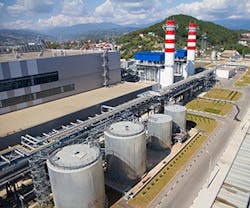Biology to Impact Solar Cell Design
Scientists have uncovered new insights into one of the molecular mechanisms behind light harvesting, work that could improve the efficiency of solar cells.
Stanford University is studying the processes that enable photosynthetic organisms to thrive, even under deep cloud cover.
The researchers found that the ability to harvest light in overcast conditions and dissipate excess energy on sunny days is driven by the same mechanism.
Understanding these principles may increase the output of artificial light harvesting devices. Renewable energy generation would be greatly improved if, for example, solar cells could yield the same production regardless of cloud cover.
